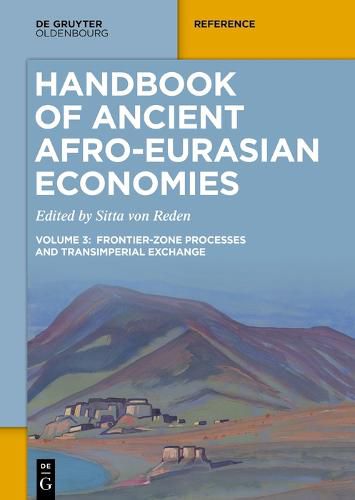Readings Newsletter
Become a Readings Member to make your shopping experience even easier.
Sign in or sign up for free!
You’re not far away from qualifying for FREE standard shipping within Australia
You’ve qualified for FREE standard shipping within Australia
The cart is loading…






The Handbook of Ancient Afro-Eurasian Economies offers in three volumes the first comprehensive discussion of economic development in the empires of the Afro-Eurasian world region to elucidate the conditions under which large quantities of goods and people moved across continents and between empires. Volume 3: Frontier-Zone Processes and Transimperial Exchange analyzes frontier zones as particular landscapes of encounter, economic development, and transimperial network formation. The chapters offer problematizing approaches to frontier zone processes as part of and in between empires, with the goal of better understanding how and why goods and resources moved across the Afro-Eurasian region. Key frontiers in mountains and steppes, along coasts, rivers, and deserts are investigated in depth, demonstrating how local landscapes, politics, and pathways explain network practices and participation in long-distance trade. The chapters seek to retrieve local knowledge ignored in popular Silk Road models and to show the potential of frontier-zone research for understanding the Afro-Eurasian region as a connected space.
$9.00 standard shipping within Australia
FREE standard shipping within Australia for orders over $100.00
Express & International shipping calculated at checkout
The Handbook of Ancient Afro-Eurasian Economies offers in three volumes the first comprehensive discussion of economic development in the empires of the Afro-Eurasian world region to elucidate the conditions under which large quantities of goods and people moved across continents and between empires. Volume 3: Frontier-Zone Processes and Transimperial Exchange analyzes frontier zones as particular landscapes of encounter, economic development, and transimperial network formation. The chapters offer problematizing approaches to frontier zone processes as part of and in between empires, with the goal of better understanding how and why goods and resources moved across the Afro-Eurasian region. Key frontiers in mountains and steppes, along coasts, rivers, and deserts are investigated in depth, demonstrating how local landscapes, politics, and pathways explain network practices and participation in long-distance trade. The chapters seek to retrieve local knowledge ignored in popular Silk Road models and to show the potential of frontier-zone research for understanding the Afro-Eurasian region as a connected space.